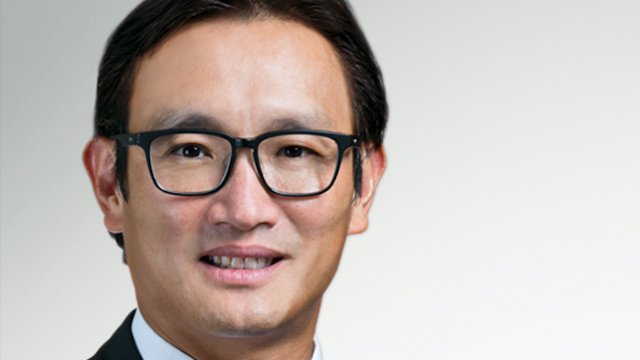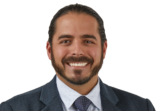It has been almost a year since Eastspring Investments completed its transaction to acquire 65% of Bangkok-based TMB Asset Management from TMB Bank in September.
It is still early days for the new joint venture, TMB Eastspring Asset Management, but the firm already has plans to build its investment capabilities, according to Bernard Teo, Singapore-based head of corporate strategy, mergers and acquisitions at Eastspring Investments.
Of the THB 378bn ($12.31bn) the firm manages, 60% is in domestic fixed income products. Foreign investment funds (FIF), in the form of feeder funds, account for around 20% of the firm’s AUM, he added. The remainder is in real estate investment trusts and domestic passive equity funds.
“We did identify a number of gaps, and that would be in the active equities and multi-asset space,” Teo told FSA in a recent interview.
An equities team is expected to be in place this year, followed by a multi-asset team in 2020, he said.
Teo believes that there is an appetite for multi-asset solutions in Thailand.
During the one-year period to the end of June, domestic mixed-asset products in Thailand had net inflows of THB 20.9bn, according to Morningstar Direct data. In the different mixed-asset categories, aggressive allocation funds were the most popular, with inflows of THB32.3bn, followed by moderate allocation (THB 2.3bn). On the flipside, conservative allocation had net outflows of THB 13.8bn.
“All mid-risk, mid-return products are probably the types of products that you should look at these days,” Teo said.
Aberdeen Standard Investments (ASI) in Thailand is also seeing a trend toward multi-asset products.
“For about five years, the market had been strong in Thailand until [a plunge in] mid-2018,” said former ASI country head Korawut Leenabanchong in a previous interview. (He has since left the firm and was replaced by Robert Penaloza last month).
“Investors want to protect their investments by shifting from equities to fixed income. But fixed income return is only about 1%, so they are looking for something between a high and low risk product,” Leenabanchong said.
Direct vs feeder funds
TMB Eastspring also plans to offer more FIFs, according to Teo.
Of the 67 funds distributed by the firm, around 15-20 are FIFs, which include feeder funds that invest in equity funds from various managers such as Wellington, Lazard and Goldman Sachs Asset Management, as well as in Pimco’s global income fund.
However, the joint venture aims to delegate management of some of its funds to Eastspring instead of distributing only feeder funds, said Xavier Meyer, Singapore-based head of distribution at Eastspring Investments.

For example, after the joint venture was created, TMB Eastspring launched in February the Asia-Pacific Property Flexible Fund, which invests around 60% of its assets in Asia-Pacific real estate investment trusts (Reits), with the rest allocated in regional real estate equities.
“The structure of the fund is that it is officially managed by TMB Eastspring, but the management of the fund is delegated to Eastspring in Singapore,” Meyer said. Since the product’s launch, the property fund has raised around $250m in assets from Thai investors, he said.
He said a benefit of direct delegation is that it allows customisation of the product based on the firm’s own investment thesis, rather than being locked into someone else’s strategy via a feeder fund.
“In terms of simplicity, definitely feeder-funds are the most simple way to provide offshore access.
“But it also depends on the availability of the strategy that you want. If you want to have more customisation, especially when you want to mix Thai assets with non-Thai assets, then directly managing FIFs [makes more sense].”
Distribution partner
Before the joint venture was formed, Eastspring was selling its products in Thailand via feeder funds through domestic partnerships with firms such as Kasikorn Asset Management, according to Teo.
But the overall strategy is to have an onshore presence in major markets, according to Teo. Thailand now is the eleventh country in Asia in which Eastspring has set up shop. Other operations are China, India and Hong Kong – all three being joint ventures, as well as Japan, Malaysia, South Korea, Singapore, Taiwan and Vietnam.
“We had been looking at Thailand for a very long time, for about 10 years, before we actually managed to secure this partnership with TMB,” Teo said.
At the time of the acquisition, TMB AM was the fourth largest asset manager in the country.
Foreign managers have the option to independently set up an onshore presence in Thailand. ASI and Manulife Investment Management are among the few that have done so. However, Eastspring chose the joint venture route because of the distribution channels provided by parent TMB Bank.
“Thailand’s fund industry is highly dominated by bank-affiliated asset managers. If you look at the top 10 asset managers by size, around nine of them are affiliated with banks,” Teo said.
ASI, which manages $1.85bn in Thailand, also acknowledged the dominance of bank-affiliated firms.
“We work with local Thai banks as distributors. The issue is that banks also have their own AM unit. Some have open architecture platforms to distribute non-bank products, but they wouldn’t take all 24 of our funds onto their platform because they have their own competing products,” Leenabanchong said.
For TMB Eastspring, a majority of its AUM is sourced from TMB Bank. But the firm is looking at expanding its distribution to non-bank channels, according to Meyer.
“TMB Eastspring now has roughly one-third of its assets outside of TMB Bank, including securities firm partners,” he said.

















